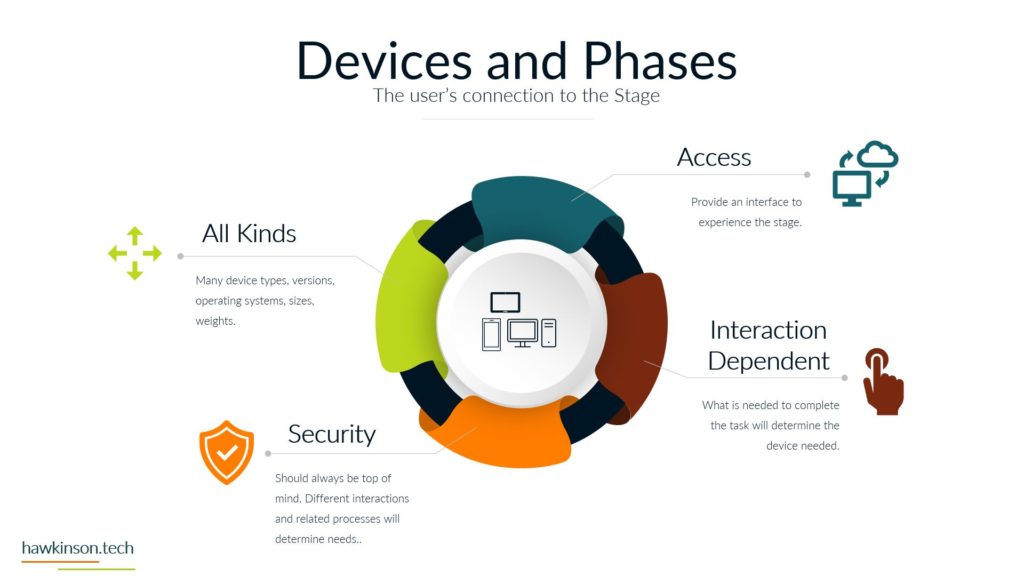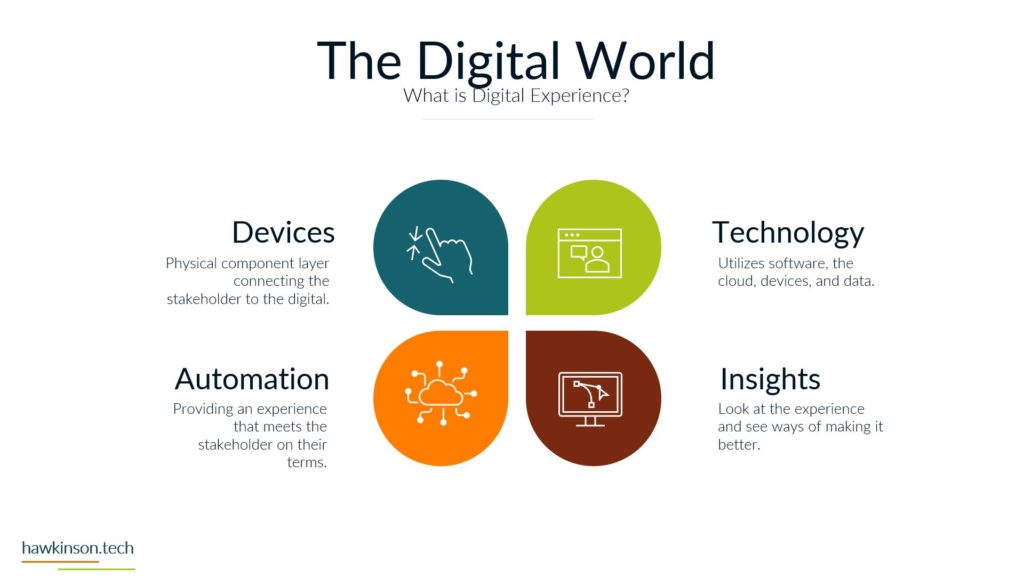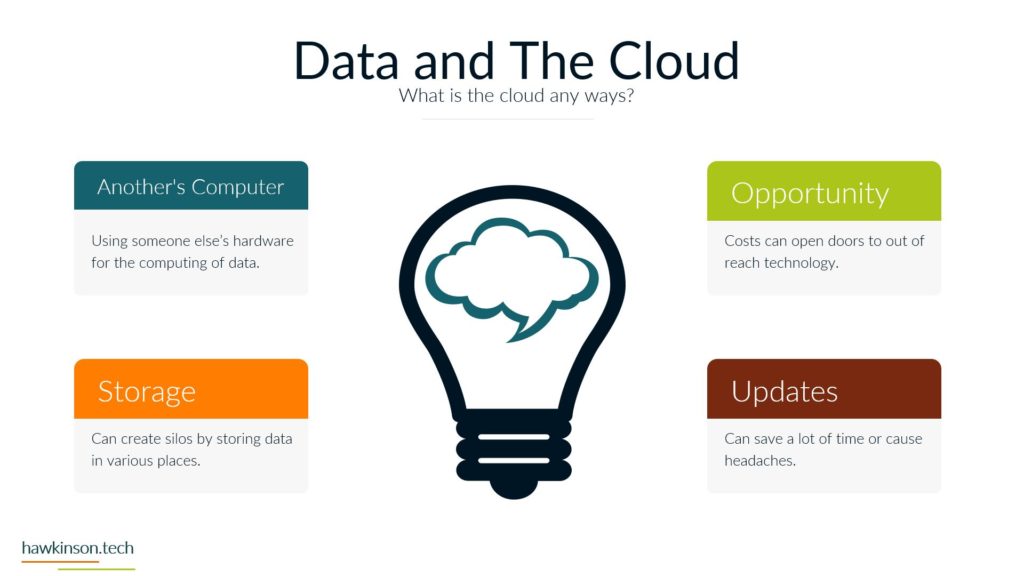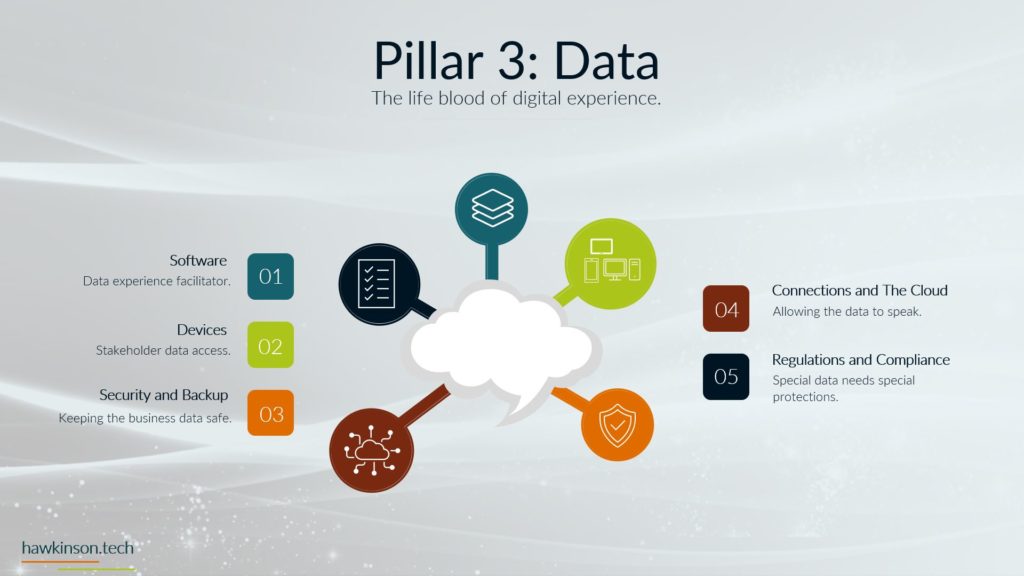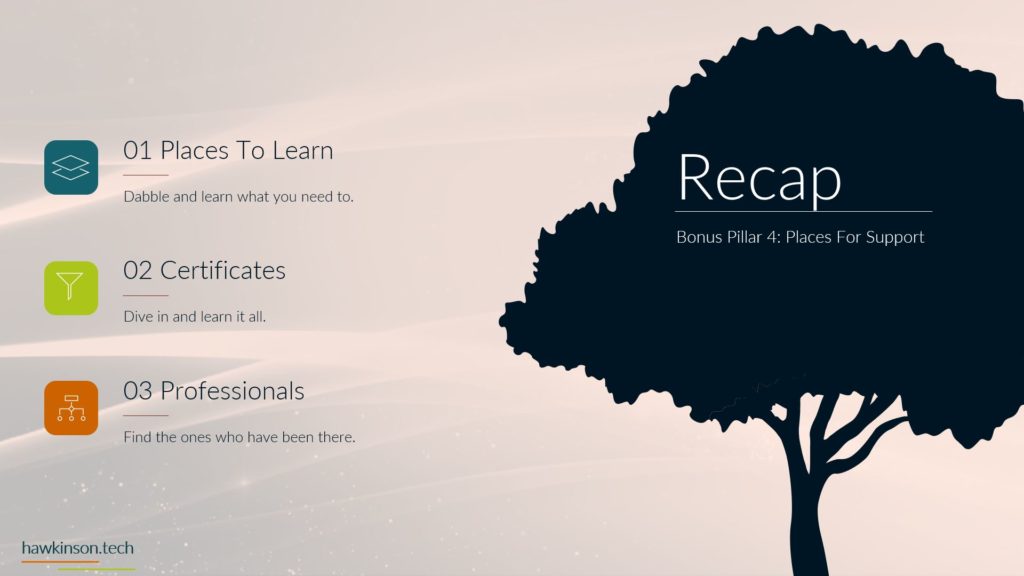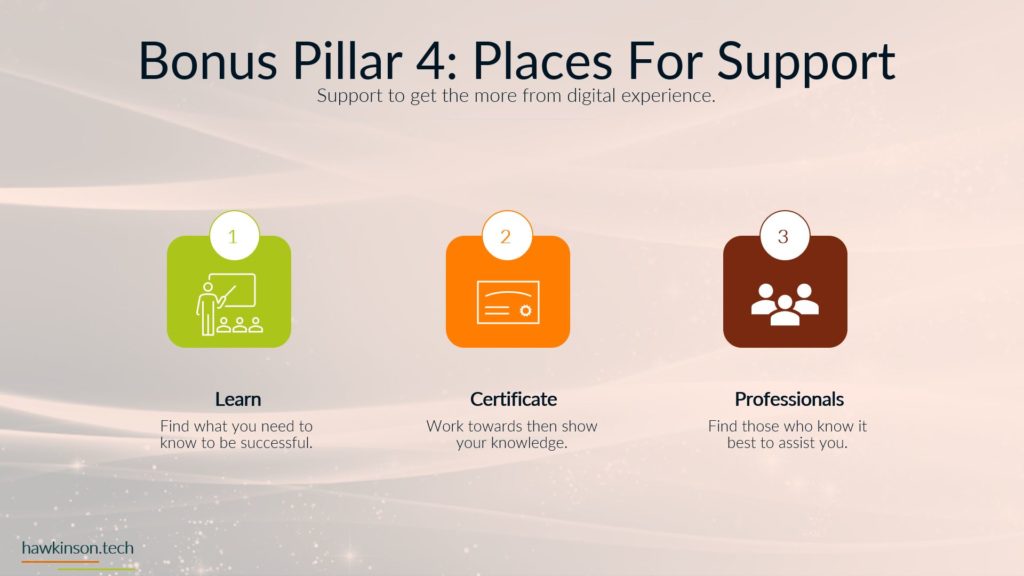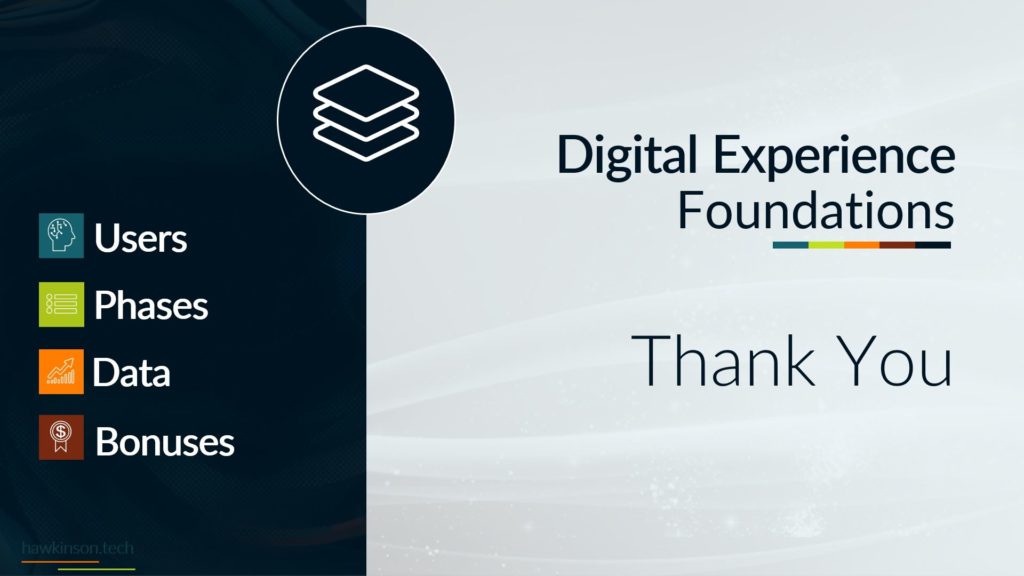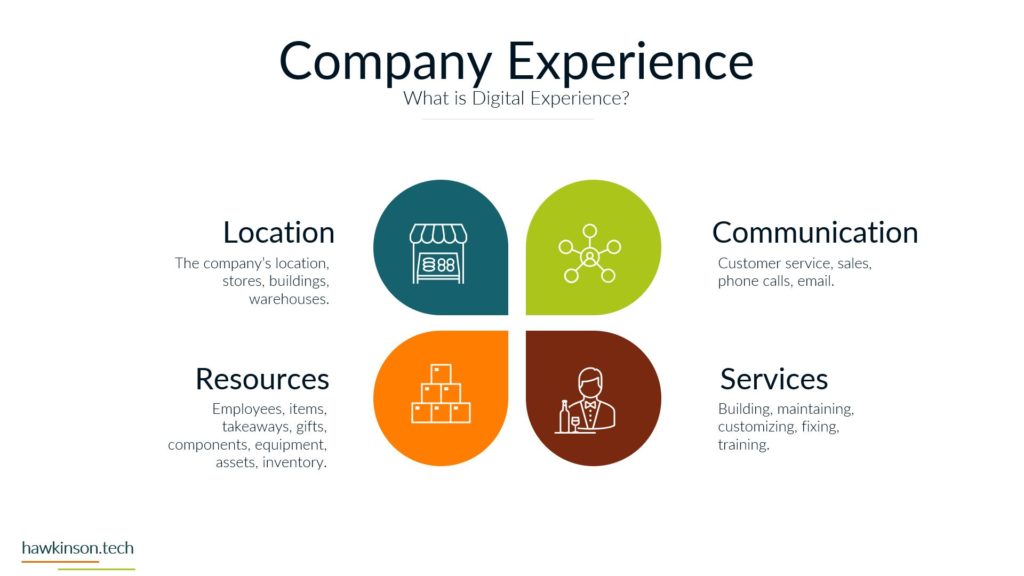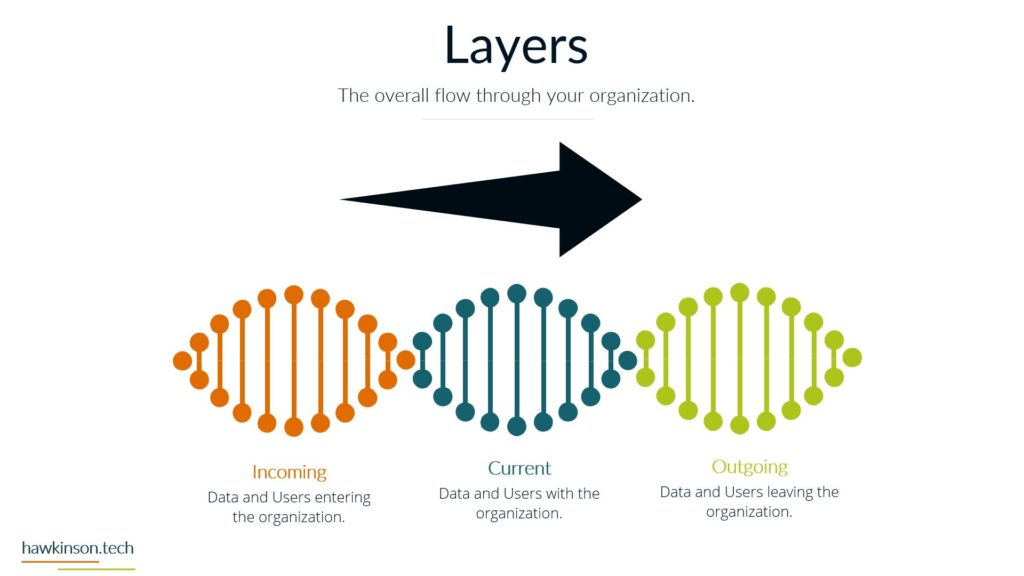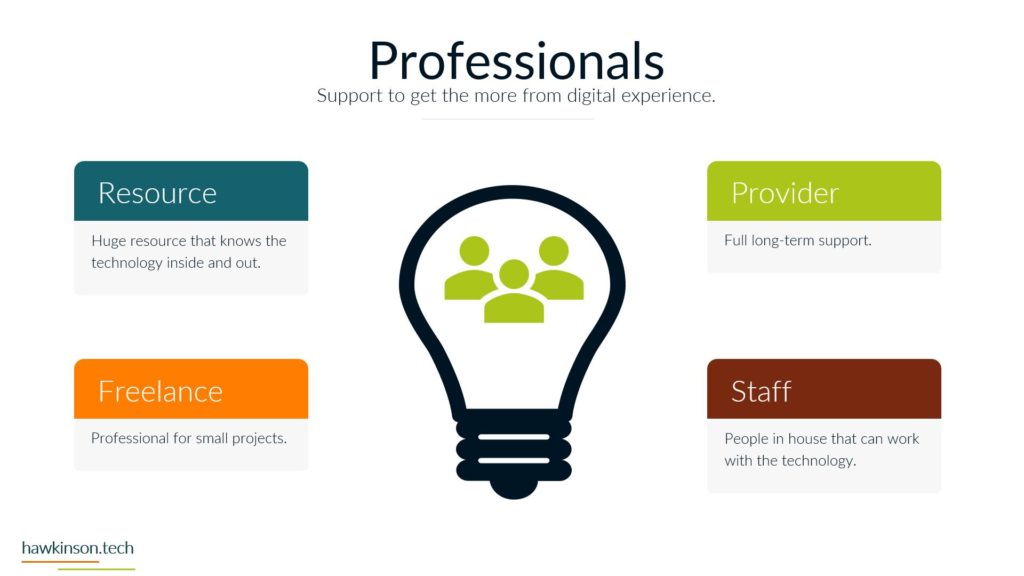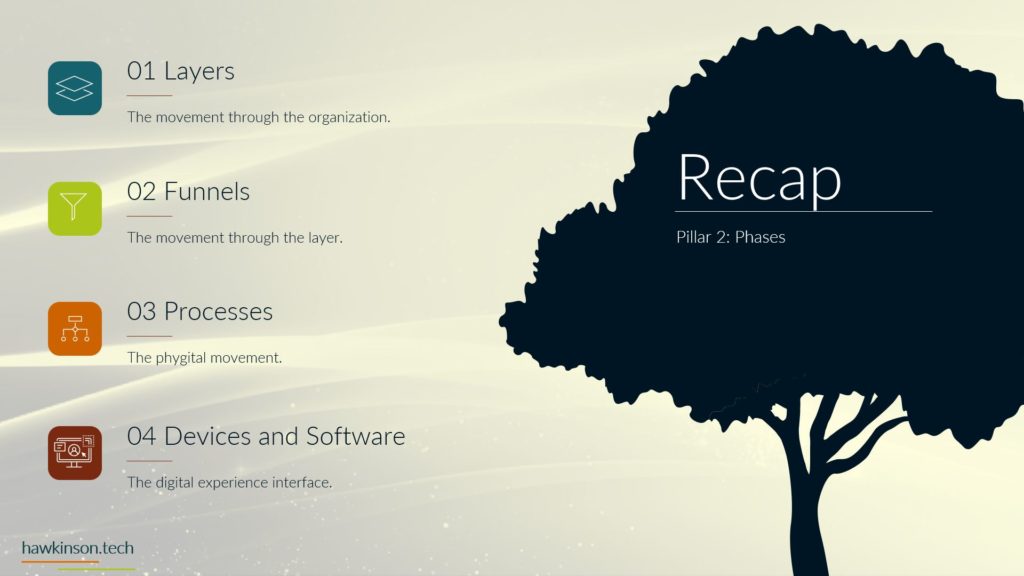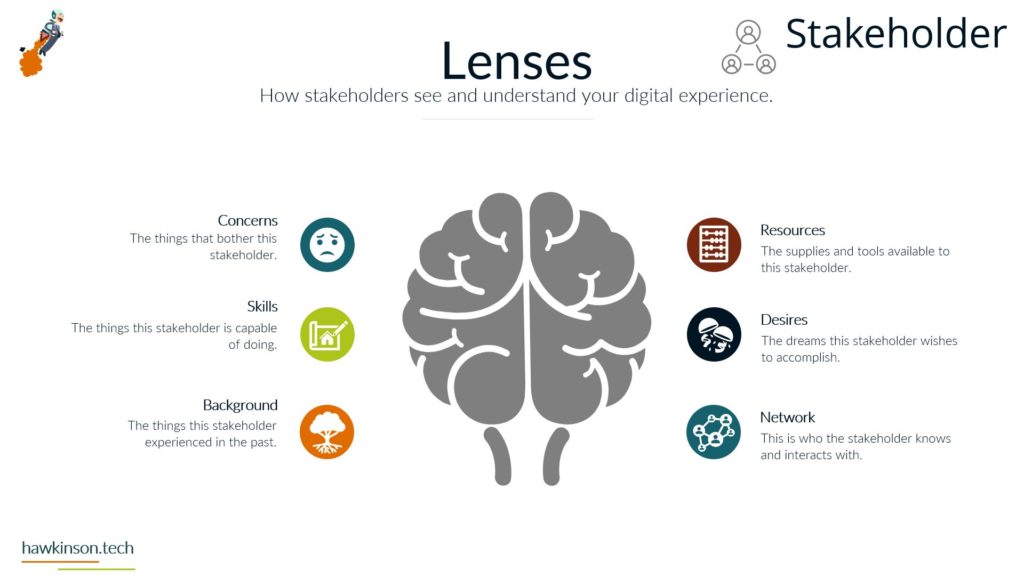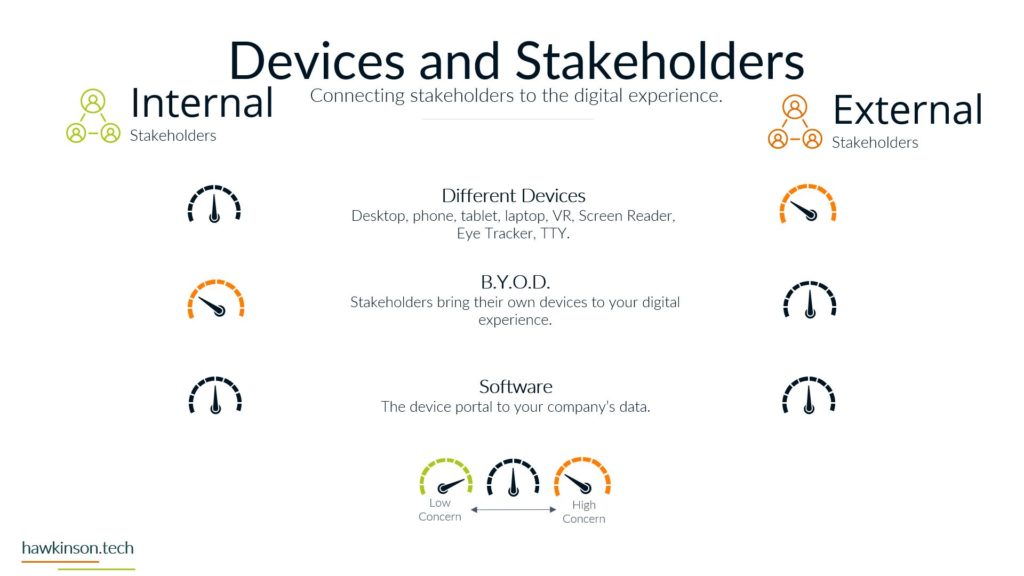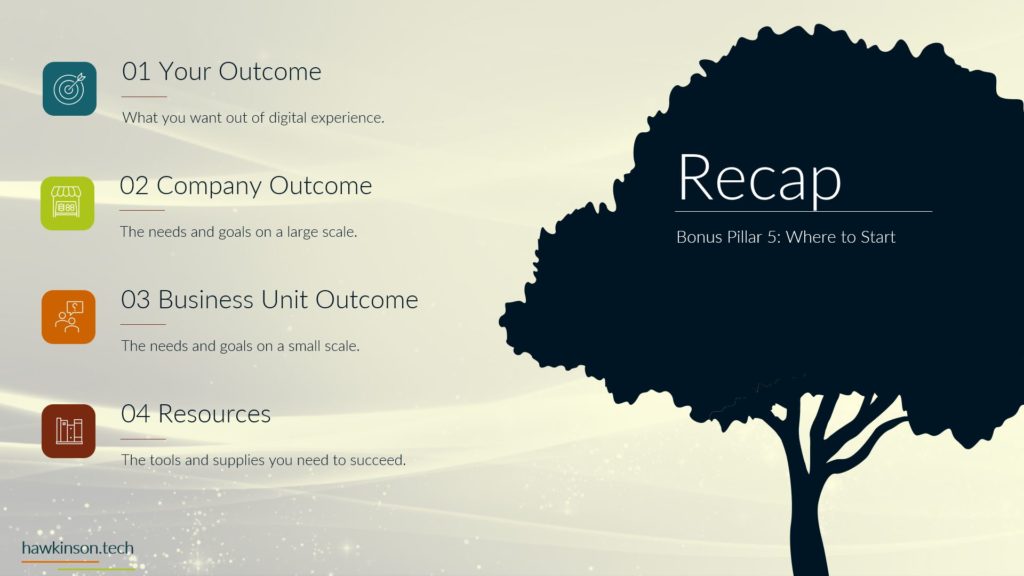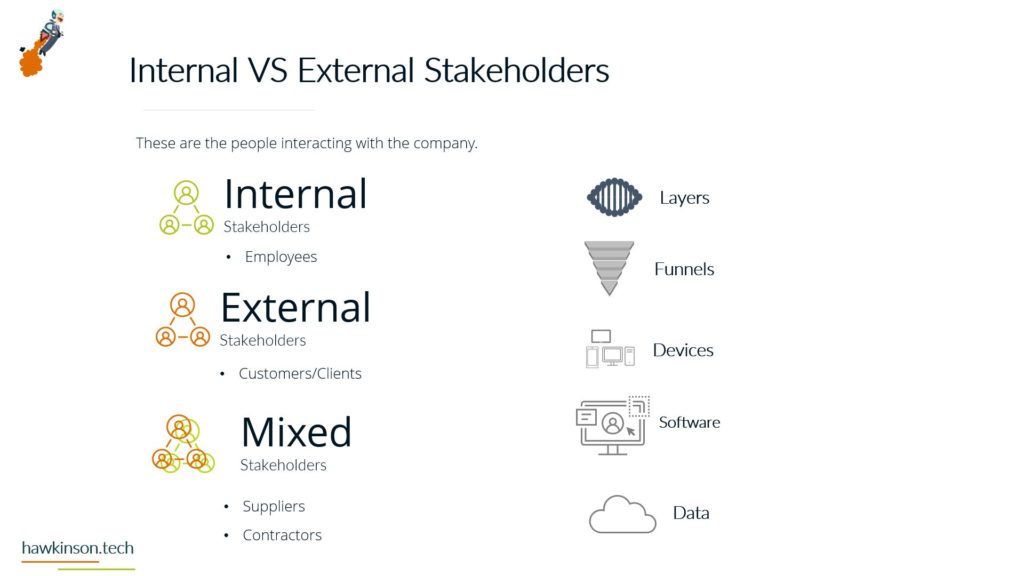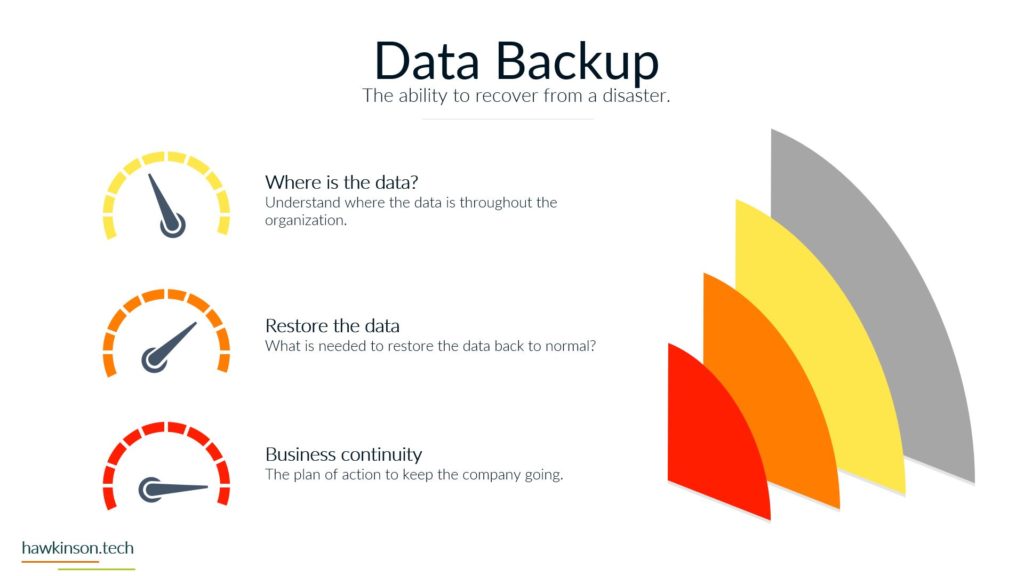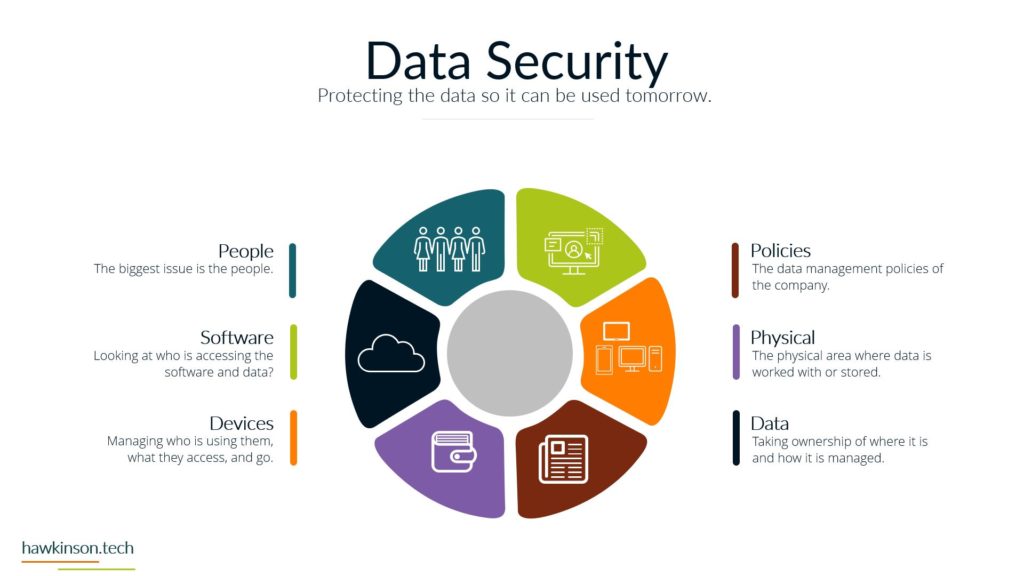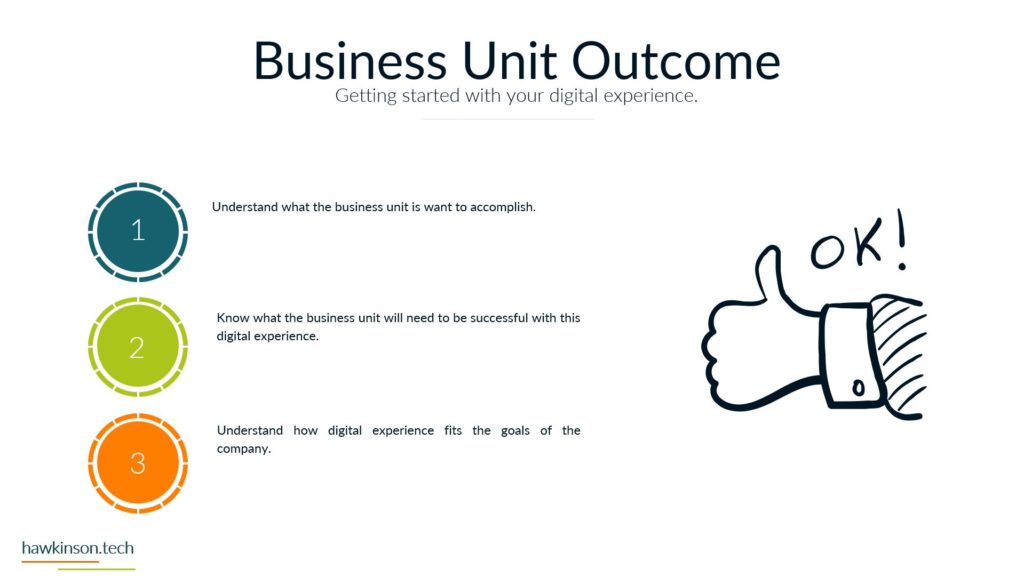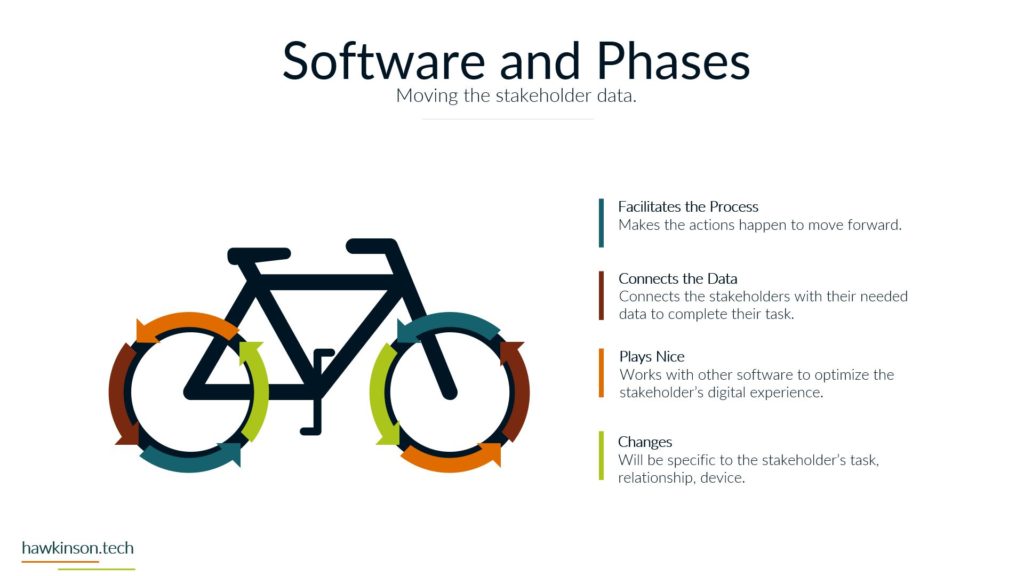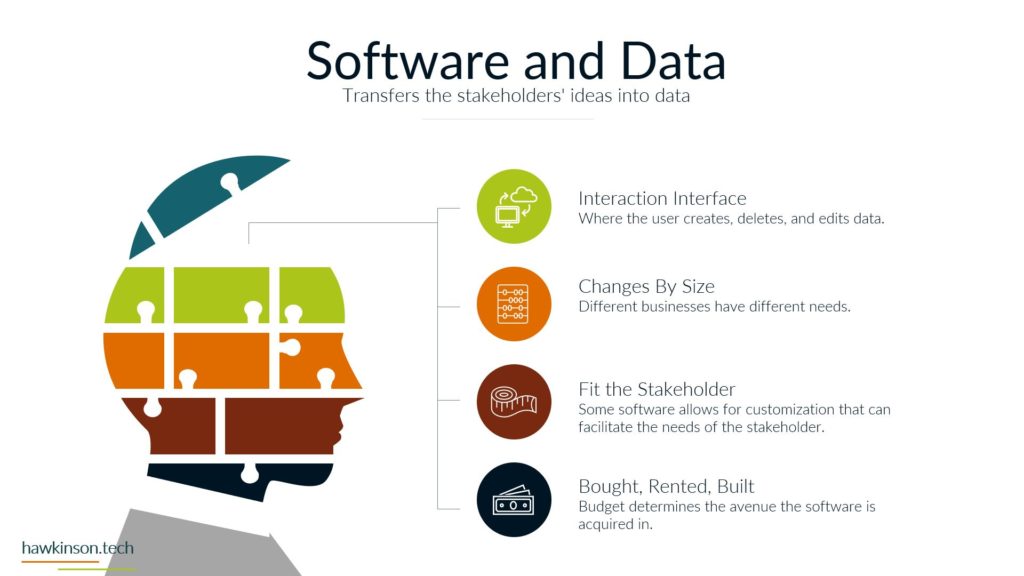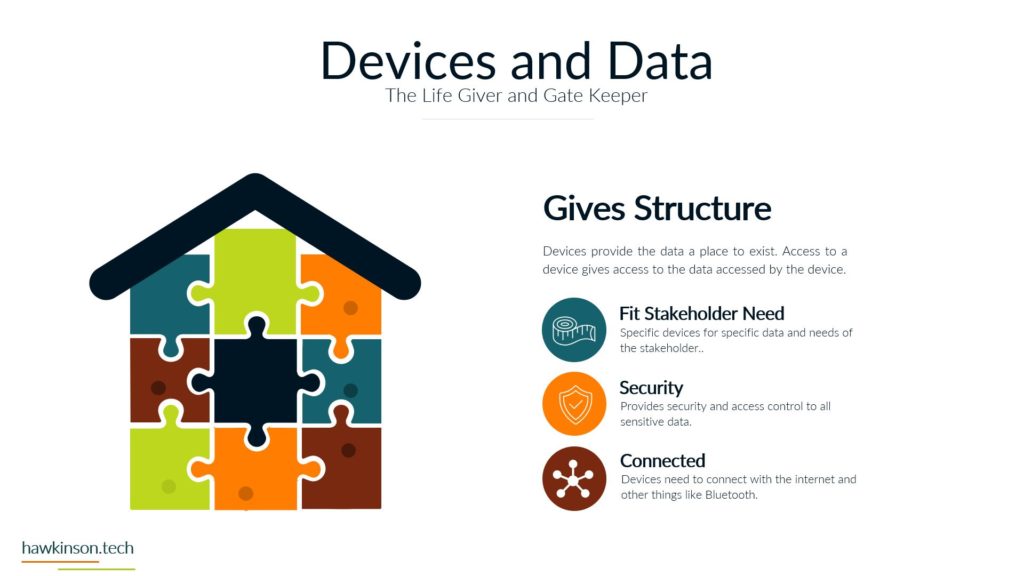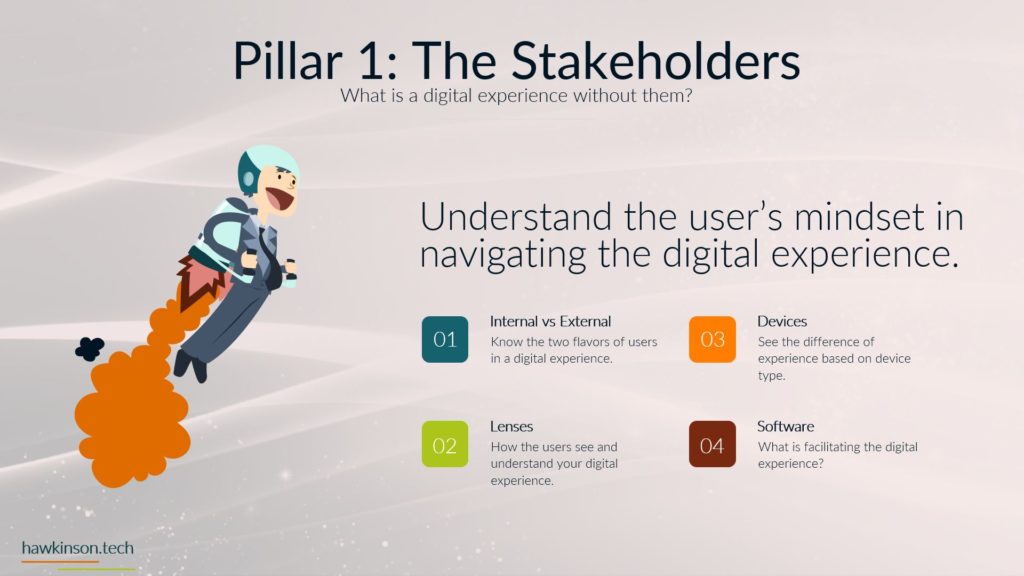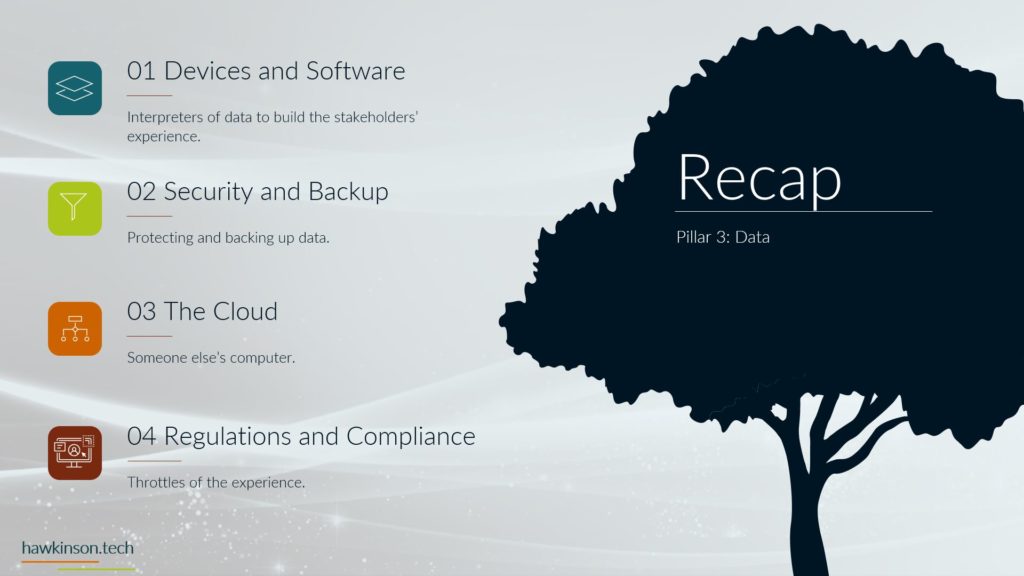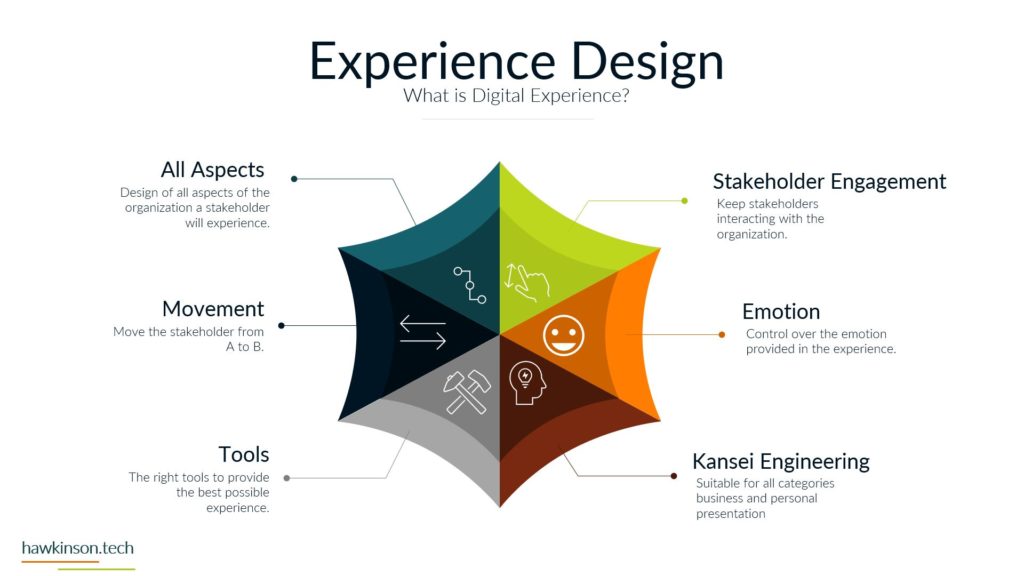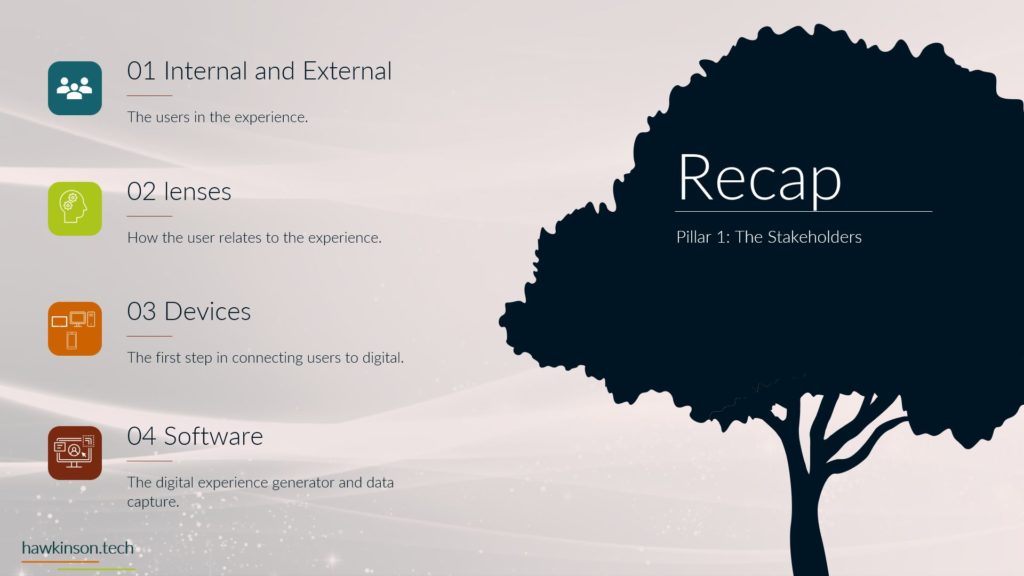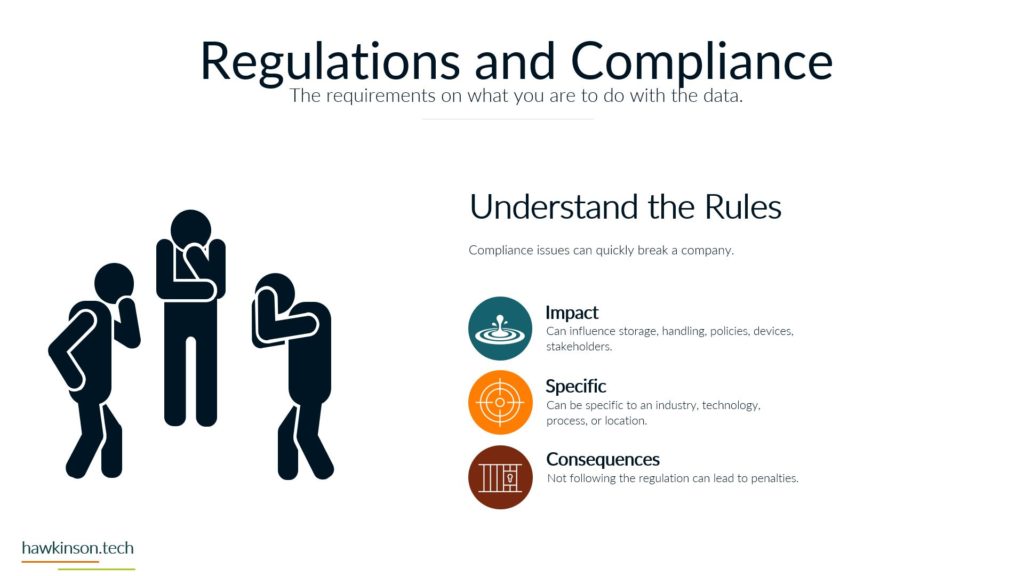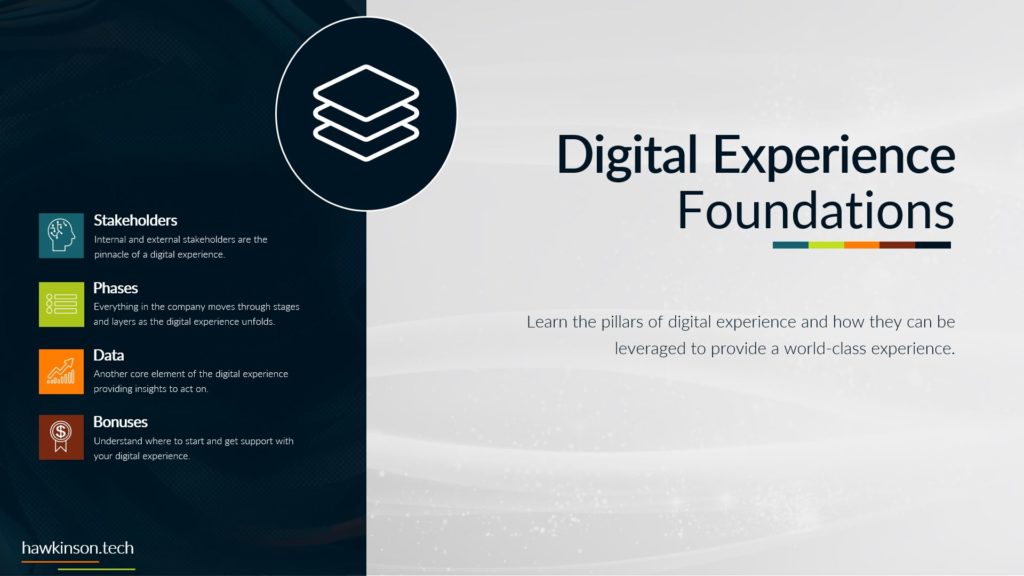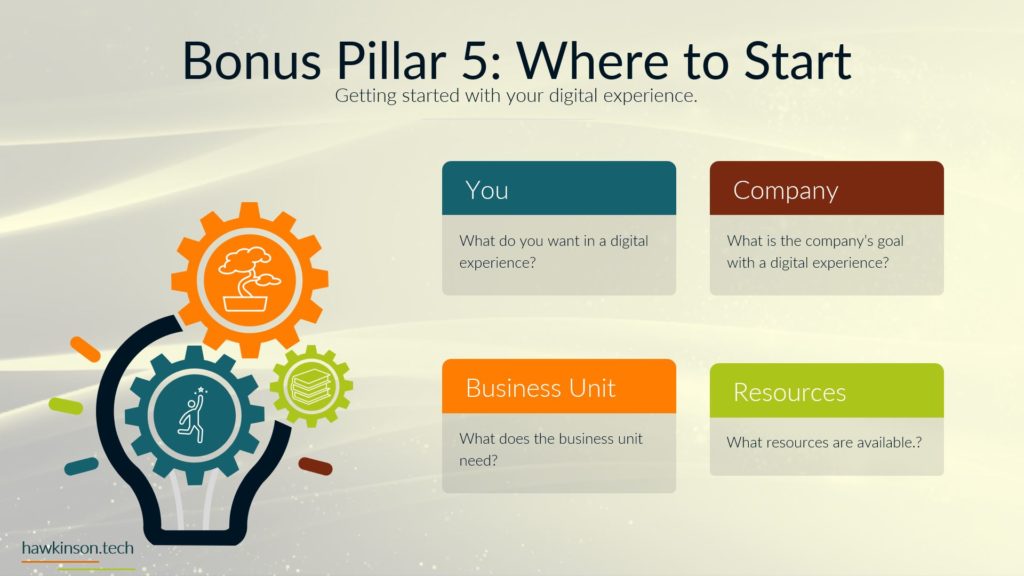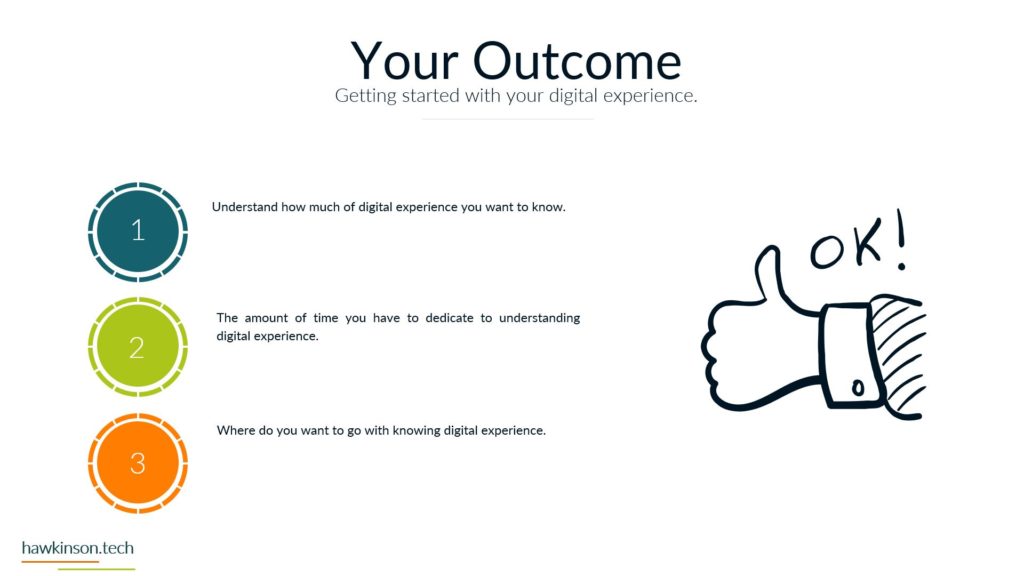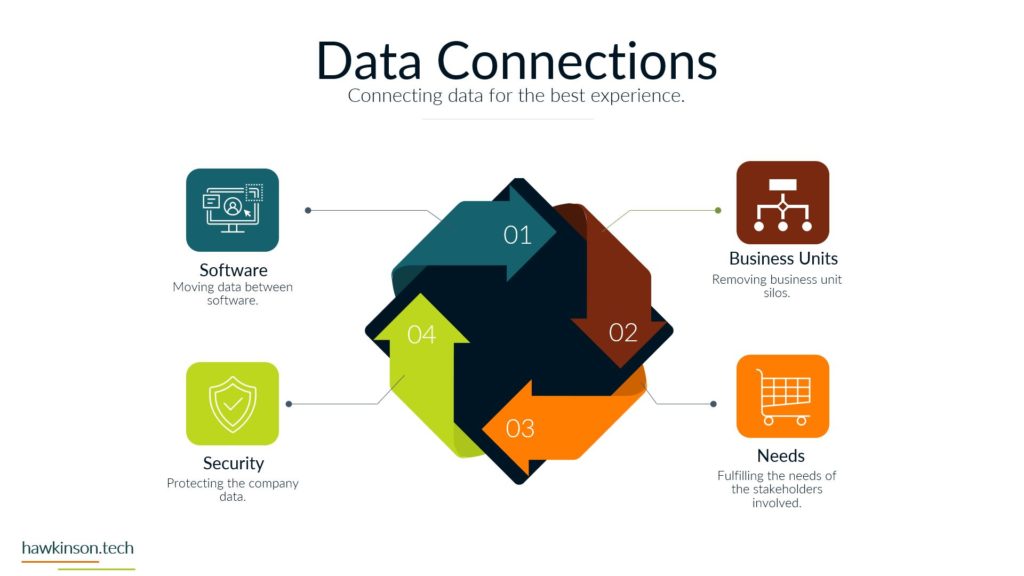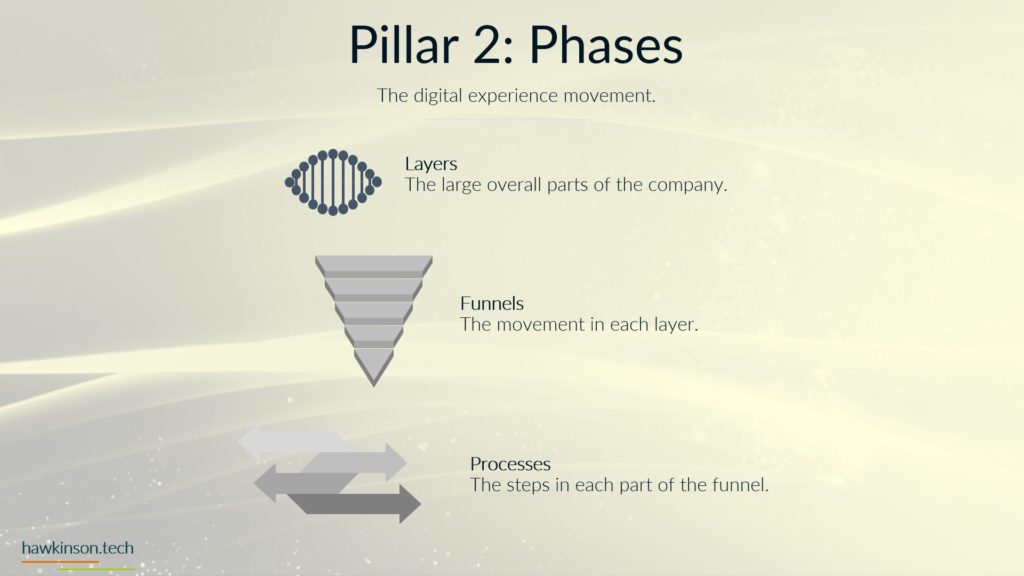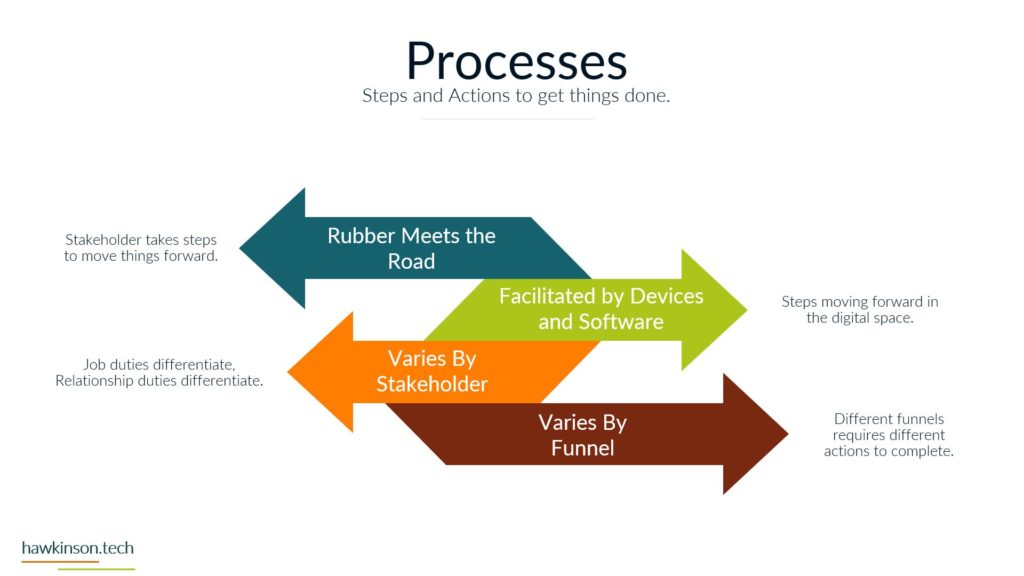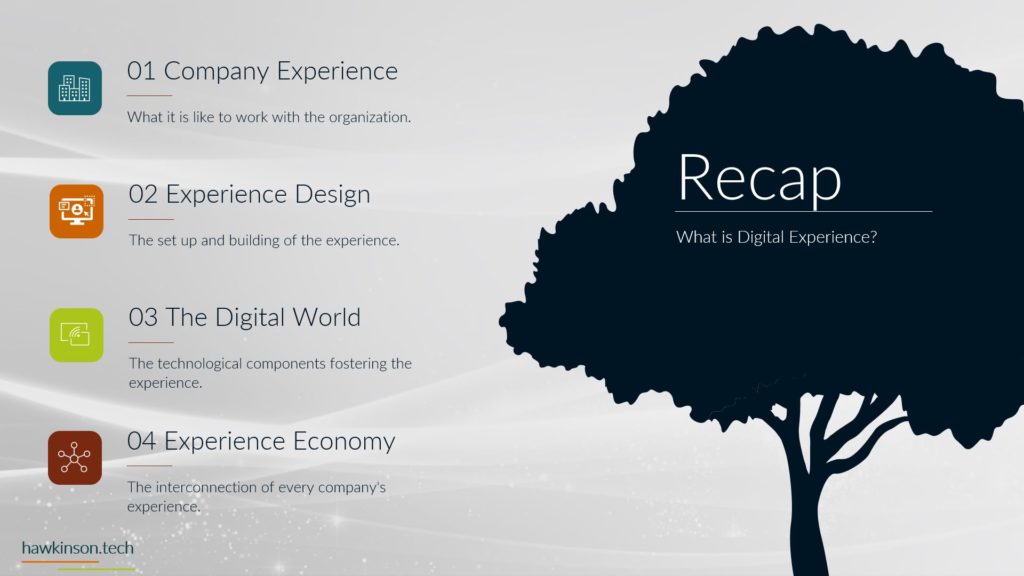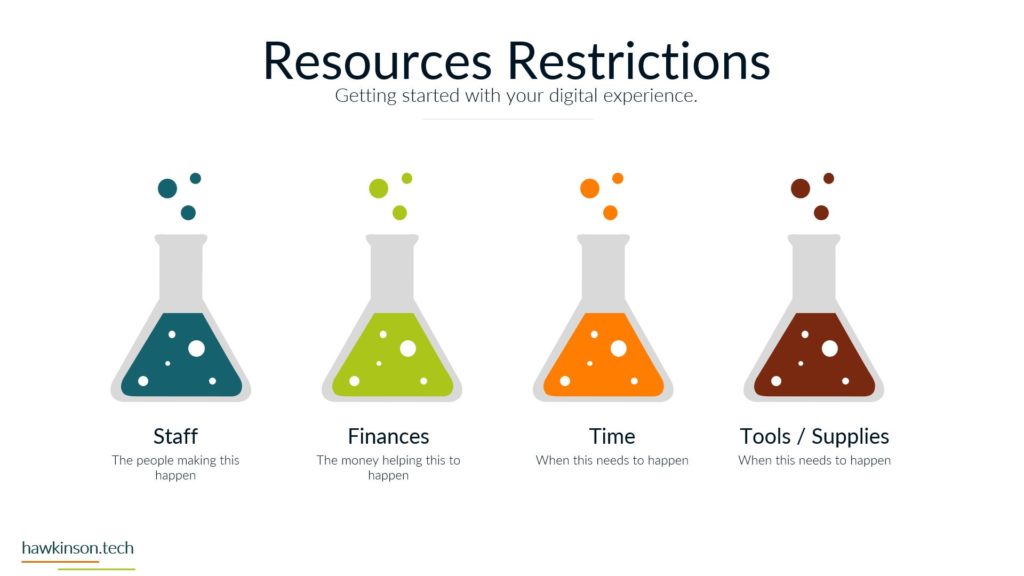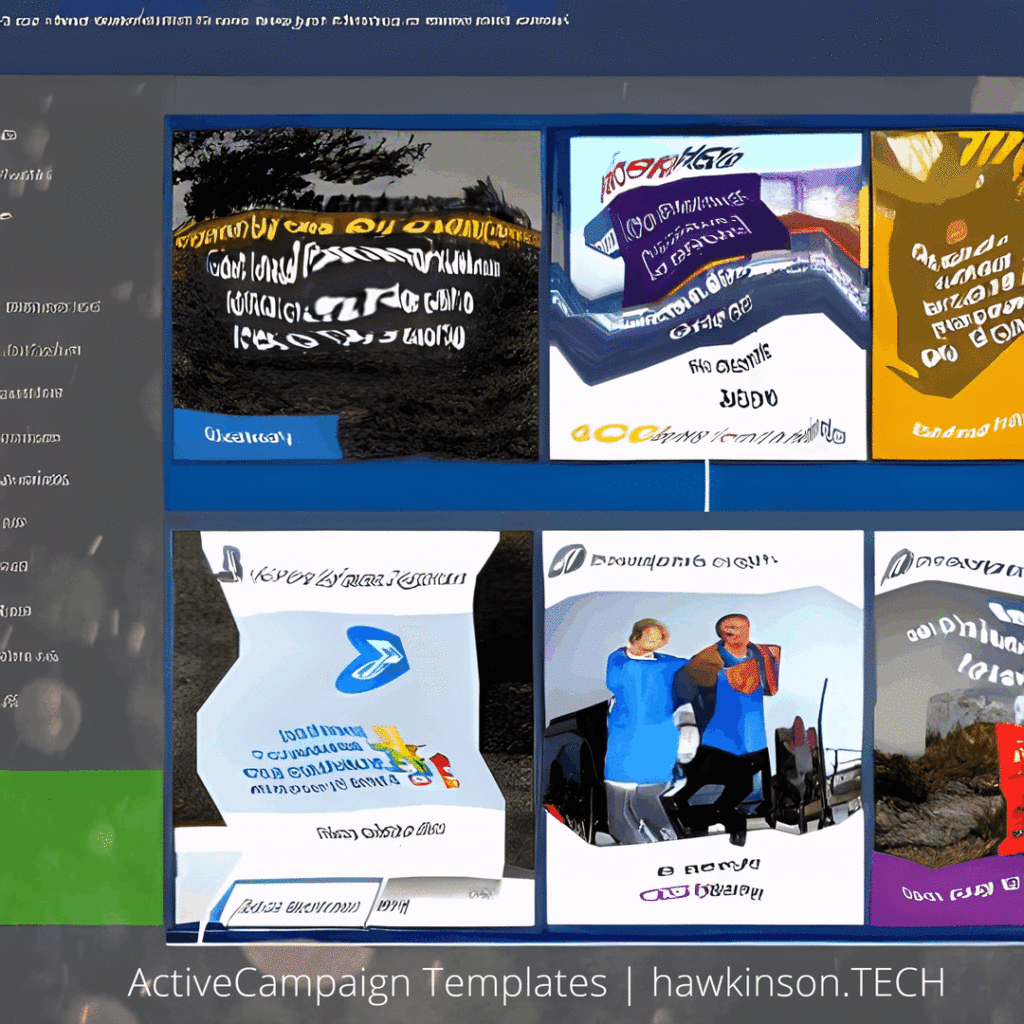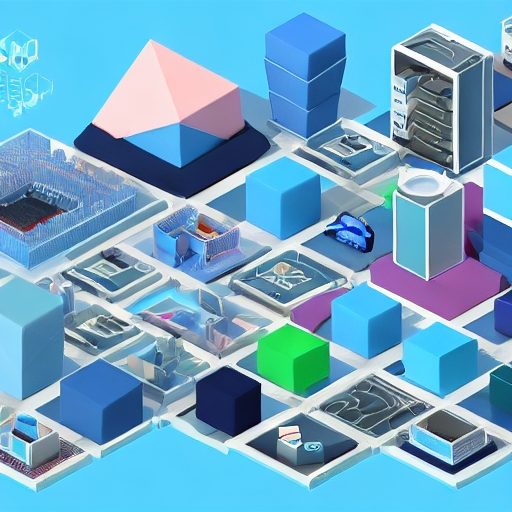In part 3, we look at the different layers, funnels, and processes users navigate to accomplish a task and the accompanying data.
Digital Experience | Pillar 2 Phases | Lesson Introduction
Follow Me Elsewhere:
Play Video
Play Video
Now let’s look at our second pillar, which is going to be the phases of the organization. So in this part, we’re looking at the movement of how things move and work with and how they move through and in and out of the organization. So for each of the different phases, we would break that down into a different layer. And we’ll get into the layers, but effectively the layers are going to be the movement in, at and away from the organization. And then in each of those different layers, we’ll talk about how we can break that down into the different funnels, which then moves somebody through that layer. Then each of those funnels can be broken down into a process and the process is where we are working through each of the actual. Steps of moving things through the organization and then we talk about the things that we’re moving is where we’re actually getting into the different components. So for example, if we’re looking at users, users will be moving into the organization, they’ll be moving at the organization and then they’ll be moving away from the organization. So for looking at our users and stakeholders and a sales. Solution, this would be a matter of getting leads, qualifying the leads and then continuing to upsell the leads and then hoping that we retain them or if they’re done with our services then they go ahead and exit the company. Similar with internal stakeholders, we’re going through and doing job recruitment and then we have them working their job, skilling them at their job and then if they leave, retire or move on, then them leaving the organization. Each of those has different funnels. And in different processes in place in order to move that stakeholder or user through the organization. Next we have devices. So every single device is also going to be moving through the organization at the organization or leaving the organization. This can be users bringing their own devices and working through the different funnels. Likewise this can also be users that were issuing them devices and then as those. Devices kind of age and have to get maintained or removed from the organization as well. Then as we’ve talked about before on each of those devices and our next stage is going to be the software where we’re actually grabbing that data and working with the users and allowing them to interface with the organization. So in this way, we kind of have multiple sides of the software. We have software that is actually facilitating the task and giving users. The ability to move something through likewise software itself also ages and it can be not so much that it’s not maintained or not up to quality. It might mean that the organization has outgrown that particular software or needs to add on to a particular software in order to make things happen or to complete given tasks. And then the last thing that we have is our data and our data is something else that in each of the different phases. And each of the different layers we are going through and we are gathering this data in order to make the processes happen, able to monitor the processes or even be able to track the processes and understand what we would need to change at other parts of the layers of the funnels of the phases and all of those things.
Related Content
More Content
In this how-to guide, we’ll discuss the steps and directions for creating an effective email marketing campaign and the importance of email marketing, and its relevance in today’s world.
Discover how ActiveCampaign’s professionally designed email templates can elevate your email marketing strategy. ActiveCampaign offers the tools to captivate your audience and make a lasting impact, from visually stunning designs to customizable layouts. With responsive designs
In today’s digital landscape, organizations must prioritize building exceptional experiences to compete and thrive. This article explores the concept of the experience economy, highlighting the importance of competing on experience and charging for experiences. It emphasizes
In this guide, we will delve into the importance of email marketing in real estate and why real estate agents need to consider email marketing to reach clients.
Messaging applications are becoming increasingly popular for personal as well as business use. These apps have various features that allow messages to be sent quickly and securely, making them perfect for collaboration. Features like group messaging,
Running a website is a task that requires time, knowledge, and experience. However, business owners can hand over the task to WordPress managed hosting providers.
Content Management System (CMS) is like a Swiss Army Knife for your website. It can help you easily manage your website content, ensuring it looks great and runs smoothly. You never have to worry about getting
Email marketing is a versatile and effective strategy that can be applied across industries to engage customers, drive sales, and build relationships. This article explores the application of email marketing in industries such as retail, healthcare,


